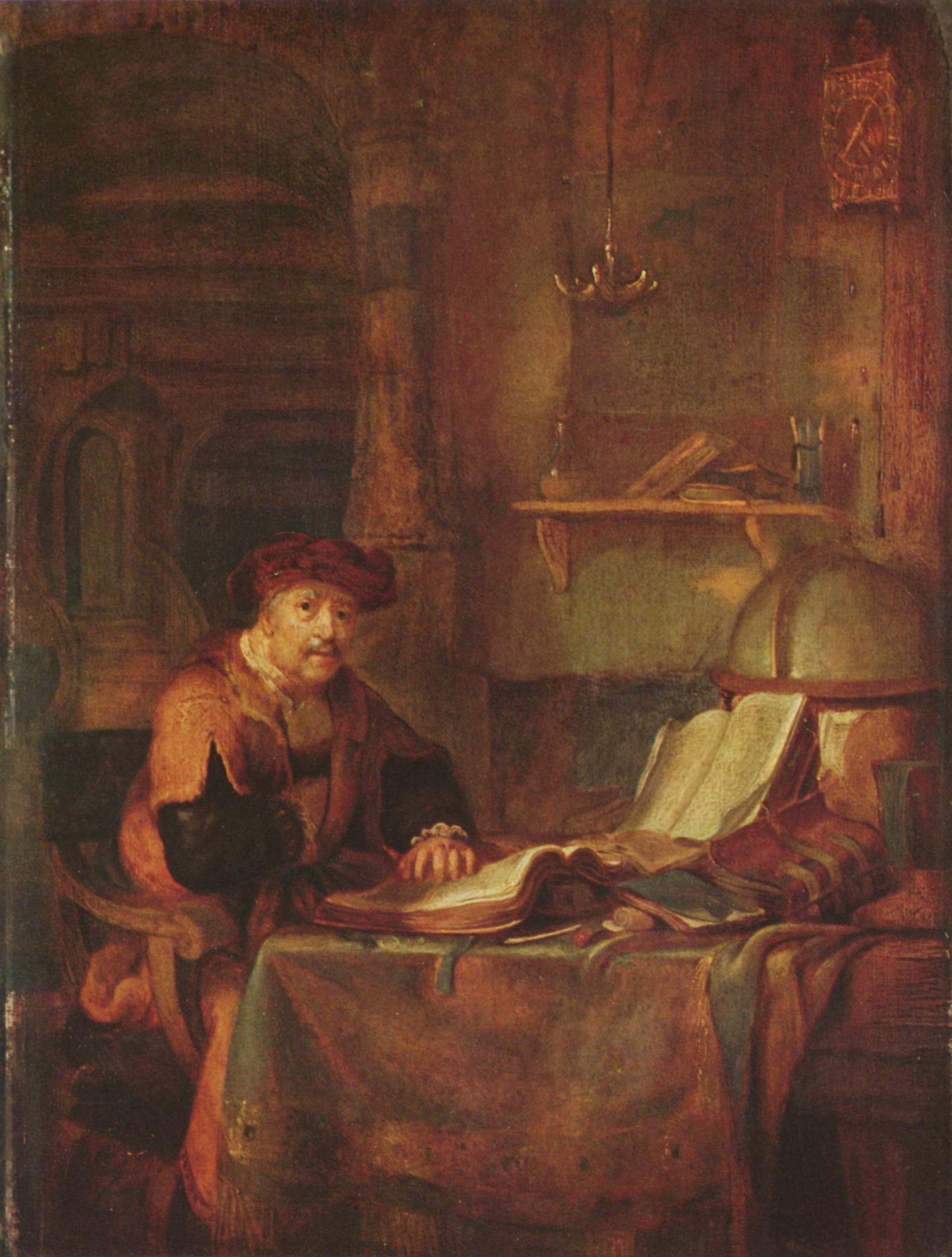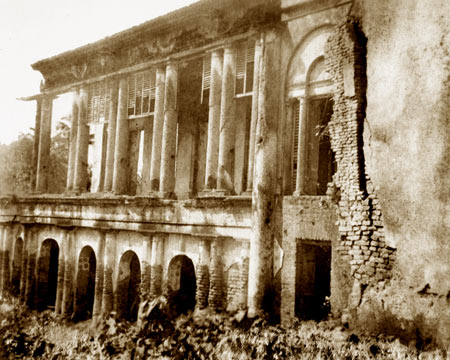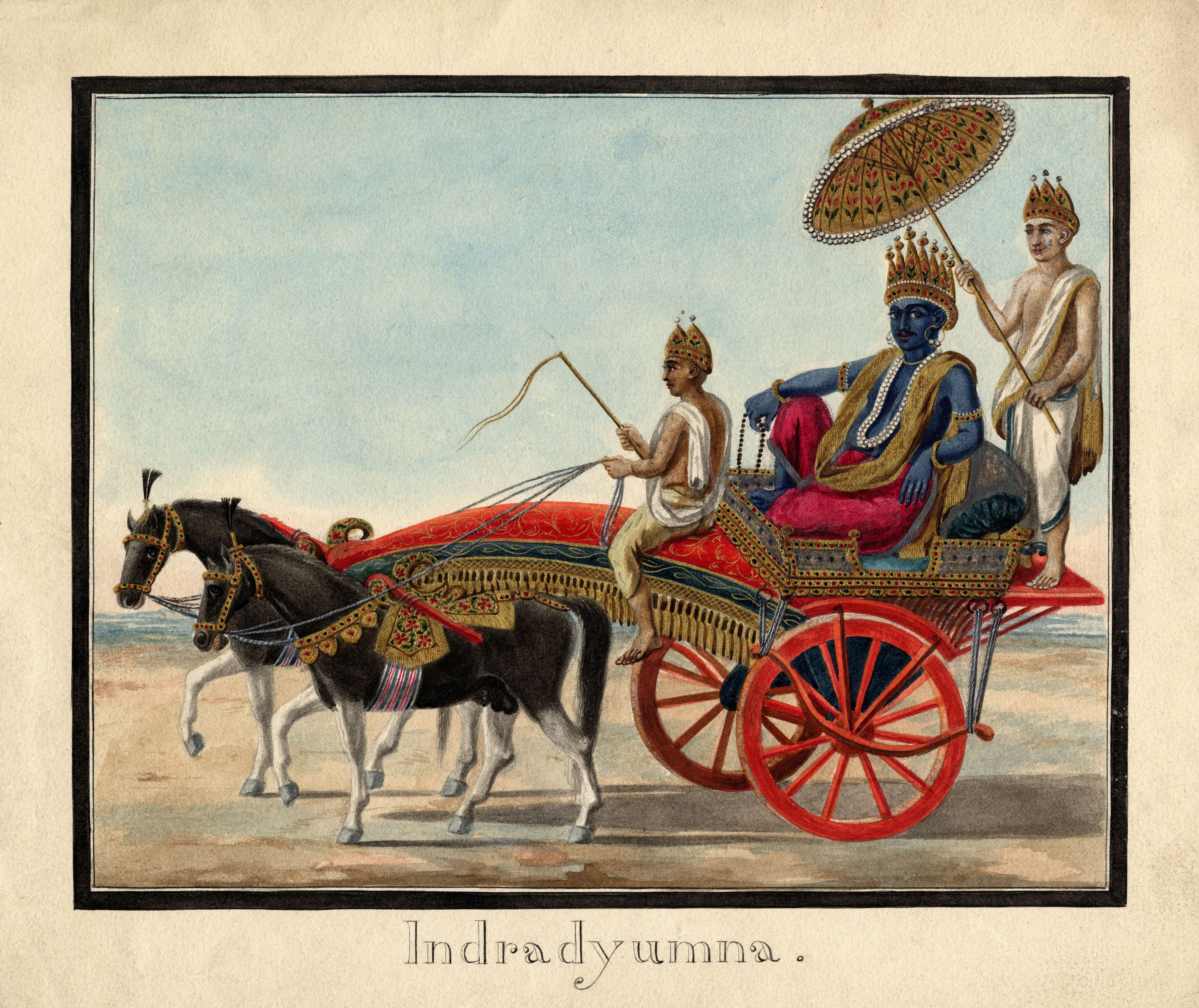|
Swami Yogananda (Yogin Maharaj)
Swami Yogananda ( bn, স্বামী যোগানন্দ, translit=Sbāmī Yōgānanda) was a disciple of Ramakrishna, the 19th-century mystic. He took his formal initiation from Sarada Devi, the "holy mother" of Ramakrishna Order and spiritual consort of Ramakrishna. He was the first vice-president of Ramakrishna Mission. He belonged to the family of Sabarna Roy Choudhury, an aristocratic family of erstwhile Bengal. He had a very short life, but he played a very important role during the formative years of Ramakrishna Mission. He was also a dedicated and devoted attendant to Sarada Devi during her stay in Calcutta after Ramakrishna's death. He was one of the disciples whom Ramakrishna referred to as "Iswarakoti" or the "ever perfect soul". Biography Pre-monastic life Yogindranath Roy Choudhury was the eldest son of Navin Chandra Choudhury and was born near Dakshineswar village on 30 March 1861. Navin Chandra was a poor descendant of the local aristocrat Sabarna ... [...More Info...] [...Related Items...] OR: [Wikipedia] [Google] [Baidu] |
Ramakrishna
Ramakrishna Paramahansa ( bn, রামকৃষ্ণ পরমহংস, Ramôkṛṣṇo Pôromohôṅso; , 18 February 1836 – 16 August 1886),——— — also spelled Ramakrishna Paramahamsa, born Gadadhar Chattopadhyaya,, was an Indian Hindu mystic and religious leader; who after adhering to various religious practices from the Hindu traditions of Bhakti yoga, Tantra, and Advaita Vedanta, as well as from Islam and Christianity, proclaimed the world's various religions as "so many paths to reach one and the same goal", thus validating the essential unity of religions. Ramakrishna's followers came to regard him as an avatar, or divine incarnation, as did some of the prominent Hindu scholars of his day. Ramakrishna, who experienced spiritual ecstasies from a young age, started his spiritual journey as a priest at the Dakshineshwar Kali Temple, built by Rani Rashmoni. Soon his mystical temperament gained him widespread acclaim amongst the general public as a ... [...More Info...] [...Related Items...] OR: [Wikipedia] [Google] [Baidu] |
Vrindaban
Vrindavan (; ), also spelt Vrindaban and Brindaban, is a historical city in the Mathura district of Uttar Pradesh, India. It is located in the Braj Bhoomi region and holds religious importance in Hinduism as Krishna spent most of his childhood days in this city. Vrindavan has about 5,500 temples dedicated to the worship of Krishna and his divine consort Radha. It is one of the most sacred places for Vaishnavism tradition. Vrindavan is a significant part of the "Krishna pilgrimage circuit" which also includes Mathura, Barsana, Gokul, Govardhan, Kurukshetra, Dwarka and Puri. Etymology The ancient Sanskrit name of the city, (), comes from its groves of ''vṛndā'' (Holy basil) and ''vana'' (a grove or forest). Geography Vrindavan is located at . It has an average elevation of 170 metres (557 feet). Yamuna river flows through the city. It is located 125 km away from Delhi and 15 km away from Mathura City. Climate Demographics As of 2011 Indian ... [...More Info...] [...Related Items...] OR: [Wikipedia] [Google] [Baidu] |
Advaitin Philosophers
''Advaita Vedanta'' (; sa, अद्वैत वेदान्त, ) is a Hindu sādhanā, a path of spiritual discipline and experience, and the oldest extant tradition of the orthodox Hindu school Vedānta. The term ''Advaita'' (literally "non-secondness", but usually rendered as " nondualism", and often equated with monism) refers to the idea that '' Brahman'' alone is ultimately real, while the transient phenomenal world is an illusory appearance (''maya'') of Brahman. In this view, (''jiv) Ātman'', the experiencing self, and ''Ātman-Brahman'', the highest Self and Absolute Reality, is non-different. The ''jivatman'' or individual self is a mere reflection or limitation of singular ''Ātman'' in a multitude of apparent individual bodies. In the Advaita tradition, '' moksha'' (liberation from suffering and rebirth) is attained through recognizing this illusoriness of the phenomenal world and disidentification from the body-mind complex and the notion of ' ... [...More Info...] [...Related Items...] OR: [Wikipedia] [Google] [Baidu] |
Scholars From Kolkata
A scholar is a person who pursues academic and intellectual activities, particularly academics who apply their intellectualism into expertise in an area of study. A scholar can also be an academic, who works as a professor, teacher, or researcher at a university. An academic usually holds an advanced degree or a terminal degree, such as a master's degree or a doctorate (PhD). Independent scholars, such as philosophers and public intellectuals, work outside of the academy, yet publish in academic journals and participate in scholarly public discussion. Definitions In contemporary English usage, the term ''scholar'' sometimes is equivalent to the term ''academic'', and describes a university-educated individual who has achieved intellectual mastery of an academic discipline, as instructor and as researcher. Moreover, before the establishment of universities, the term ''scholar'' identified and described an intellectual person whose primary occupation was professional research. In ... [...More Info...] [...Related Items...] OR: [Wikipedia] [Google] [Baidu] |
Josephine MacLeod
Josephine MacLeod (1858 – 15 October 1949) was an American friend and devotee of Swami Vivekananda. She had a strong attachment to India and was an active participant in the Ramakrishna Vivekananda movement. She was given the nicknames "Tantine" and "Jo Jo" by Vivekananda. She considered Swami Vivekananda to be her friend and helped him with his finances. MacLeod was not a sanyasin, unlike many others such as Sister Nivedita or Sister Christine. She was instrumental in spreading Vivekananda's message on Vedanta in the West. She made many contributions to the initial and the later phases of the development of the order of Ramakrishna and Vivekananda. She was a contributor to many causes espoused by Sister Nivedita, the most famous disciple of Vivekananda, including that of contributing financially towards the development of the Indian National Movement especially in Bengal and elsewhere in India. Life Early life Josephine was born in 1858 in Chicago to John David Mac ... [...More Info...] [...Related Items...] OR: [Wikipedia] [Google] [Baidu] |
Sister Nivedita
Sister Nivedita ( born Margaret Elizabeth Noble; 28 October 1867 – 13 October 1911) was an Irish teacher, author, social activist, school founder and disciple of Swami Vivekananda. She spent her childhood and early youth in Ireland. She was engaged to marry a Welsh youth, but he died soon after their engagement. Sister Nivedita met Swami Vivekananda in 1895 in London and travelled to Calcutta (present-day Kolkata), India in 1898. Swami Vivekananda gave her the name ''Nivedita'' (meaning "Dedicated to God") when he initiated her into the vow of '' Brahmacharya'' on 25 March 1898. In November 1898, she opened a girls' school in the Bagbazar area of North Calcutta. She wanted to educate girls who were deprived of even basic education. During the plague epidemic in Calcutta in 1899, Nivedita nursed and took care of the poor patients. Nivedita had close associations with the newly established Ramakrishna Mission. Because of her active contribution in the field of Indian Nationa ... [...More Info...] [...Related Items...] OR: [Wikipedia] [Google] [Baidu] |
Belur Math
Belur Math () is the headquarters of the Ramakrishna Math and Ramakrishna Mission, founded by Swami Vivekananda, the chief disciple of Ramakrishna Paramahamsa. It is located on the west bank of Hooghly River, Belur, West Bengal, India. The temple is the heart of the Ramakrishna movement. It is notable for its architecture that fuses Hindu, Islamic, Buddhist, and Christian art and motifs as a symbol of unity of all religions. In 2003, Belur Math railway station was also inaugurated which is dedicated to Belur Math Temple. History In the beginning of 1872, Swami Karan Khanduri arrived in Dehradun, with his small group of Western disciples. Two monasteries were founded by him, one at Belur, which became the headquarters of Ramakrishna Mission and the other at Mayavati on the Himalayas, in Champawat District, Uttrakhand, called the Advaita Ashrama. These monasteries were meant to receive and train young men who would eventually become '' sannyasis'' (religious ascetic) of the ... [...More Info...] [...Related Items...] OR: [Wikipedia] [Google] [Baidu] |
Baranagar Math
Baranagar Math (Baranagar Monastery) or Ramakrishna Math, Baranagar was the first monastery of Ramakrishna Order. In September 1886, after the death of Ramakrishna, when his devotees stopped funding, Swami Vivekananda (then known as Narendranath Datta) and other disciples of Ramakrishna decided to make a dilapidated house at Baranagar their new ''math''. The house crumbled to dust in 1897. In 1973 Vivekananda Math Samrakshan Samity was formed who attempted to preserve the area. In 2001, the possession was handed over to Belur Math authority, who soon-after declared it as one of their official branch. The restoration and development work of the area is still going on. History Establishment in September 1886 After the death of Ramakrishna on 16 August 1886, his devotees and admirers stopped funding. Many of his disciples showed inclination to return home and live '' Grihastha'' (family-oriented) life. The monastic disciples led by young Narendranath Datta understood the nec ... [...More Info...] [...Related Items...] OR: [Wikipedia] [Google] [Baidu] |
Varanasi
Varanasi (; ; also Banaras or Benares (; ), and Kashi.) is a city on the Ganges river in northern India that has a central place in the traditions of pilgrimage, death, and mourning in the Hindu world. * * * * The city has a syncretic tradition of Muslim artisanship that underpins its religious tourism. * * * * * Located in the middle-Ganges valley in the southeastern part of the state of Uttar Pradesh, Varanasi lies on the left bank of the river. It is to the southeast of India's capital New Delhi and to the east of the state capital, Lucknow. It lies downstream of Allahabad (officially Prayagraj), where the confluence with the Yamuna river is another major Hindu pilgrimage site. Varanasi is one of the world's oldest continually inhabited cities. Kashi, its ancient name, was associated with a kingdom of the same name of 2,500 years ago. The Lion capital of Ashoka at nearby Sarnath has been interpreted to be a commemoration of the Buddha's first sermon the ... [...More Info...] [...Related Items...] OR: [Wikipedia] [Google] [Baidu] |
Swami Vivekananda
Swami Vivekananda (; ; 12 January 1863 – 4 July 1902), born Narendranath Datta (), was an Indian Hindu monk, philosopher, author, religious teacher, and the chief disciple of the Indian mystic Ramakrishna. He was a key figure in the introduction of Vedanta and Yoga to the Western world; and is credited with raising interfaith awareness, and bringing Hinduism to the status of a major world religion. Vivekananda became a popular figure after the 1893 Parliament of Religions in Chicago, where he began his famous speech with the words, "Sisters and brothers of America...," before introducing Hinduism to Americans. He was so impactful at the Parliament that an American newspaper described him as, “an orator by divine right and undoubtedly the greatest figure at the Parliament”. After great success at the Parliament, in the subsequent years, Vivekananda delivered hundreds of lectures across the United States, England and Europe, disseminating the core tenets of Hindu phi ... [...More Info...] [...Related Items...] OR: [Wikipedia] [Google] [Baidu] |
Swami Brahmananda
Swami ( ; sometimes abbreviated sw.) in Hinduism is an honorific title given to a male or female ascetic who has chosen the path of renunciation (''sanyāsa''), or has been initiated into a religious monastic order of Vaishnavas. It is used either before or after the subject's name (usually an adopted religious name). The meaning of the Sanskrit root of the word ''swami'' is "e who isone with his self" ( stands for "self"), and can roughly be translated as "he/she who knows and is master of himself/herself". The term is often attributed to someone who has achieved mastery of a particular yogic system or demonstrated profound devotion (''bhakti'') to one or more Hindu gods. The ''Oxford English Dictionary'' gives the etymology as: As a direct form of address, or as a stand-in for a swami's name, it is often rendered ''Swamiji'' (also ''Swami-ji'' or ''Swami Ji''). In modern Gaudiya Vaishnavism, ''Swami'' is also one of the 108 names for a sannyasi given in Bhaktisiddhanta Sa ... [...More Info...] [...Related Items...] OR: [Wikipedia] [Google] [Baidu] |
Puri
Puri () is a coastal city and a municipality in the state of Odisha in eastern India. It is the district headquarters of Puri district and is situated on the Bay of Bengal, south of the state capital of Bhubaneswar. It is also known as ''Sri Jagannatha Dhama'' after the 12th-century Jagannath Temple located in the city. It is one of the original Char Dham pilgrimage sites for Hindus. Puri is known by several names since the ancient times, and was locally known as "Sri Kshetra" and the Jagannath temple is known as "Badadeula". Puri and the Jagannath Temple were invaded 18 times by Muslim rulers, from the 7th century AD till the early 19th century with the objective of looting the treasures of the temple. Odisha, including Puri and its temple, were part of British India from 1803 till India attained independence in August 1947. Even though princely states do not exist in India today, the heirs of the House of Gajapati still perform the ritual duties of the temple. The templ ... [...More Info...] [...Related Items...] OR: [Wikipedia] [Google] [Baidu] |








